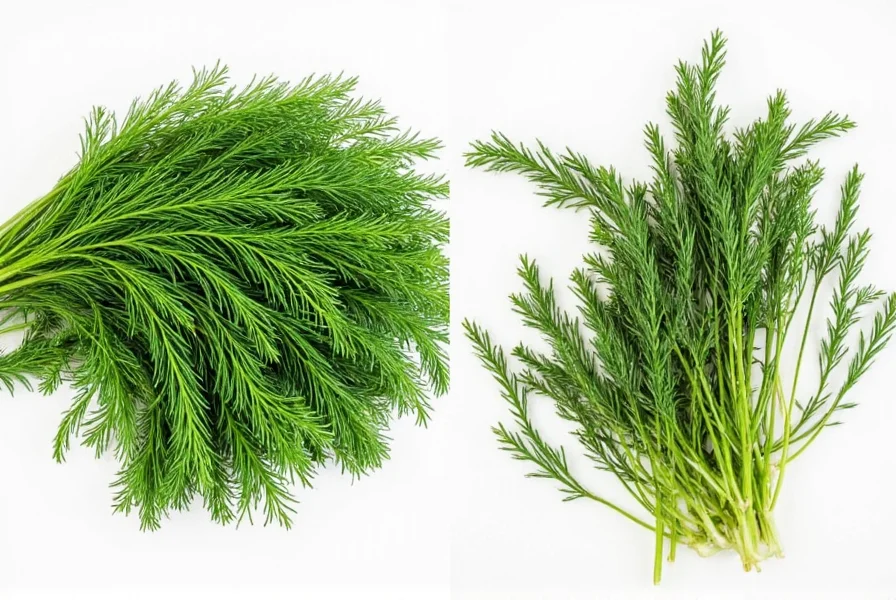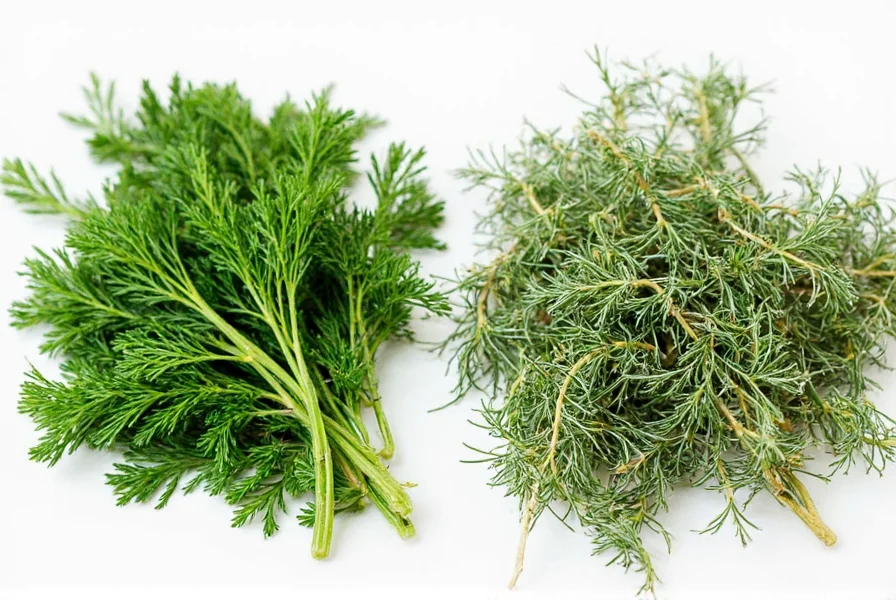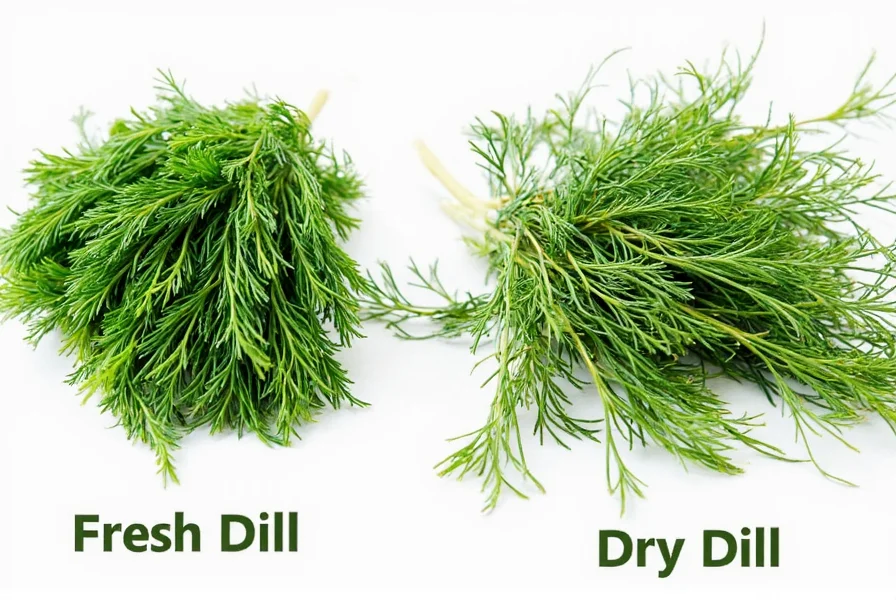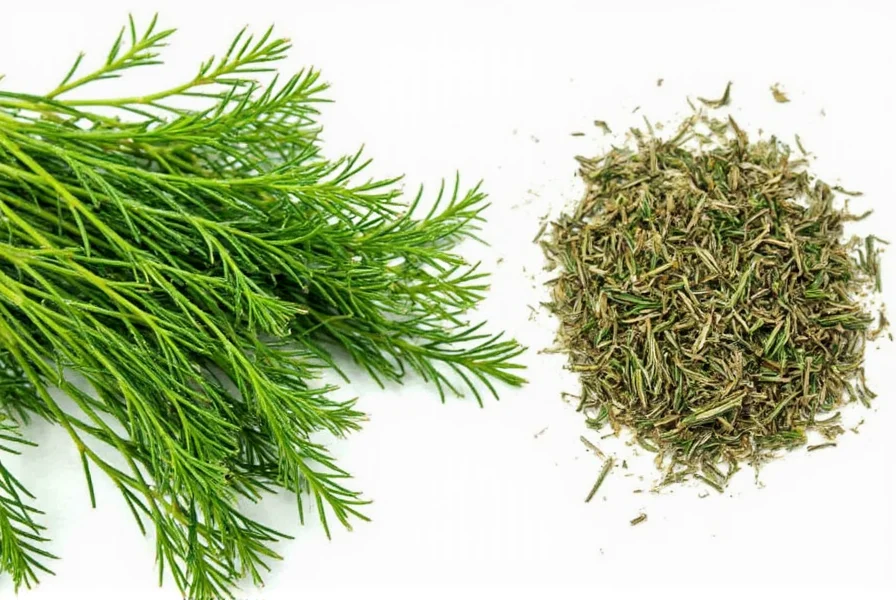Table of Contents
- Introduction
- Flavor Profiles: Fresh vs Dry
- Storage Tips for Maximum Shelf Life
- Cooking Applications: When to Use What
- How to Choose Fresh and Dried Dill
- Frequently Asked Questions
- Conclusion
Introduction: Fresh vs Dried Dill Explained
Dill is a versatile herb used in many cuisines, but choosing between fresh and dried dill can be confusing. Fresh dill offers a bright, grassy flavor perfect for garnishes and raw dishes, while dried dill provides a more concentrated, earthy taste ideal for slow-cooked meals and pickling. This guide covers everything you need to know to use each type effectively.

Flavor Profiles: Fresh vs Dry
Let's start with the most obvious difference — taste. Here's a quick breakdown of what each type brings to the table:
| Attribute | Fresh Dill | Dry Dill |
|---|---|---|
| Flavor Intensity | Bright, grassy, slightly citrusy | Muted, earthier, more concentrated |
| Texture | Tender leaves and soft stems | Crispy, brittle, and crumbly |
| Best Used In | Sauces, garnishes, raw dishes | Stews, pickles, baked goods |
| Shelf Life | 3–5 days in fridge | 6 months to 1 year |
The Flavor Factor
Fresh dill delivers a vibrant, almost mint-like freshness. Its bright, slightly peppery kick makes it perfect for finishing dishes like soups, salads, and seafood. On the other hand, dry dill offers a more subdued but longer-lasting flavor. It works well when you need depth without the visual presence of leafy greens.
Storage Tips for Maximum Shelf Life

One of the biggest challenges with fresh herbs is keeping them from wilting before you even get a chance to use them. Here are some clever hacks to keep your dill fresher, longer:
How to Store Fresh Dill
- Jar & Water Method: Place freshly washed dill stems in a jar with an inch of water. Cover loosely with a plastic bag and refrigerate.
- Freeze for Later: Chop fresh dill and mix with olive oil in an ice cube tray. Freeze and pop out cubes as needed for sauces or sautés.
- Drying Option: If you have extra dill you won't use soon, hang small bundles upside down in a cool, dry place for 7–10 days to make your own dried dill.
How to Store Dry Dill
- Airtight Containers: Keep dried dill in a sealed spice jar away from heat and moisture.
- Dark Storage: Exposure to light diminishes potency over time, so store in a dark pantry or cupboard.
- No Refrigeration Needed: Unlike fresh herbs, dried dill doesn't require refrigeration and keeps its flavor much longer.
Cooking Applications: When to Use What

Knowing when to reach for fresh versus dry dill is the key to maximizing flavor. Let's explore some ideal uses for each:
When to Use Fresh Dill
- Cucumber Pickling (Fresh Style): Nothing beats fresh dill in homemade refrigerator pickles. The crispness pairs beautifully with vinegar and garlic.
- Garnishing Soups & Salads: Add a sprinkle of fresh dill just before serving for that extra burst of color and aroma.
- Seafood Dishes: Gravlax, salmon tartare, and lemon-butter fish all shine with fresh dill's brightness.
- Dips & Sauces: Tzatziki, ranch dressing, or avocado lime sauce — fresh dill elevates every bite.
When to Use Dry Dill
- Slow-Cooked Stews & Soups: Dried dill blends in nicely with hearty ingredients and releases flavor gradually during long cooking times.
- Pickling (Traditional Style): Classic fermented pickles often call for dried dill to ensure consistent flavor throughout the brining process.
- Baking Savory Goods: Try adding dry dill to cheese breads, biscuits, or savory scones for a subtle herbal note.
- Rubbing Meats: Mix dry dill with salt, pepper, and lemon zest to create a flavorful crust for roasted chicken or pork tenderloin.
How to Choose Fresh and Dried Dill
Fresh Dill Buying Tips
- Look for Vibrant Green Leaves: Avoid any bunches that appear yellowing or wilted.
- Check the Stems: They should be firm, not slimy or mushy.
- Fragrance Test: Rub a leaf between your fingers. Fresh dill should smell clean and aromatic, not musty or stale.

Dry Dill Buying Tips
- Packaging Matters: Choose products in sealed containers or vacuum-sealed bags to ensure freshness.
- Color Clue: Good-quality dried dill retains a greenish hue; brown or faded leaves indicate age and lost flavor.
- Smell Before You Buy: Even dried herbs should have a noticeable scent. If it smells weak or dusty, skip it.
Frequently Asked Questions About Fresh vs Dry Dill
Here are answers to some of the most common questions about using fresh and dried dill in your cooking:
Can I substitute dried dill for fresh dill in recipes?
Yes, but with important considerations. The general substitution ratio is 1 teaspoon of dried dill for every 1 tablespoon of fresh dill. This is because dried dill is more concentrated. When substituting, add dried dill earlier in the cooking process to allow time for rehydration and flavor release, while fresh dill should be added at the end for maximum flavor impact.
Why does dried dill taste different from fresh dill?
Drying changes dill's chemical composition. Fresh dill contains volatile oils that give it that bright, grassy flavor, but many of these evaporate during the drying process. Dried dill develops a more earthy, concentrated flavor profile as the moisture content decreases and certain compounds become more pronounced. It's not "worse" - just different - like comparing a fresh tomato to sun-dried tomatoes.
How should I store fresh dill to make it last longer?
The best method is the jar-and-water technique: trim the stems, place in a jar with about an inch of water, cover loosely with a plastic bag, and refrigerate. Change the water every 2-3 days. Properly stored, fresh dill can last up to 10 days. For longer storage, chop and freeze in oil or water as ice cubes.
Can I make my own dried dill at home?
Absolutely! The easiest method is air-drying. Wash and gently pat dry dill sprigs, then tie them in small bundles and hang upside down in a warm, dry, dark place with good air circulation for 1-2 weeks. Once completely dry and crumbly, remove the leaves from stems and store in an airtight container. Your homemade dried dill will be fresher and more flavorful than store-bought.
Which type of dill has more nutritional value?
Fresh dill generally retains more vitamin C and some other water-soluble nutrients that diminish during drying. However, dried dill is more concentrated by weight, so a teaspoon of dried dill actually contains more of certain nutrients than a teaspoon of fresh dill. For maximum nutritional benefit, use fresh dill when possible, but don't worry - both forms offer health benefits including antioxidants and anti-inflammatory compounds.
What's the best way to revive wilted fresh dill?
Submerge the wilted dill in ice-cold water for 15-30 minutes. The cold water will rehydrate the cells and often bring back crispness. For severely wilted dill, try trimming the stems and placing in fresh cold water with a pinch of sugar. If the dill is beyond saving for garnishes, consider using it in cooked dishes where appearance matters less, or freeze it for future use in sauces and soups.
Conclusion: Choosing the Right Dill for Your Recipe
When it comes to fresh dill vs dry dill, there's no clear winner — just different tools for different jobs. Fresh dill shines in raw or lightly cooked dishes where you want bold flavor and a touch of color. Dry dill plays a supporting role in heartier recipes, bringing depth and longevity to the table.

Ultimately, having both in your kitchen arsenal gives you flexibility. Whether you're a weekend cook or a seasoned chef, mastering the art of dill usage opens the door to a whole new world of flavors.
So go ahead — stock your fridge with fresh dill and your spice rack with dry. Your taste buds will thank you!











 浙公网安备
33010002000092号
浙公网安备
33010002000092号 浙B2-20120091-4
浙B2-20120091-4